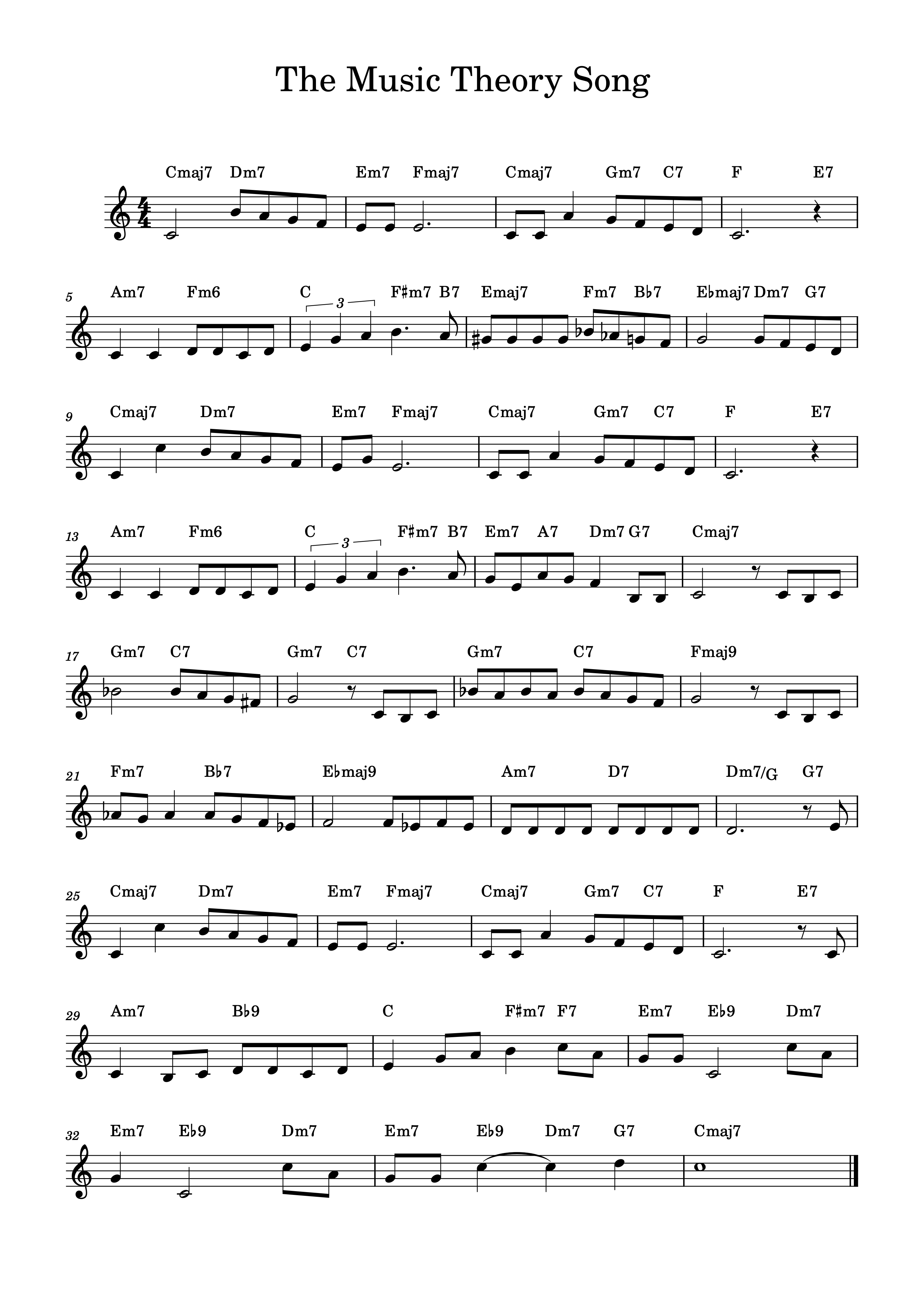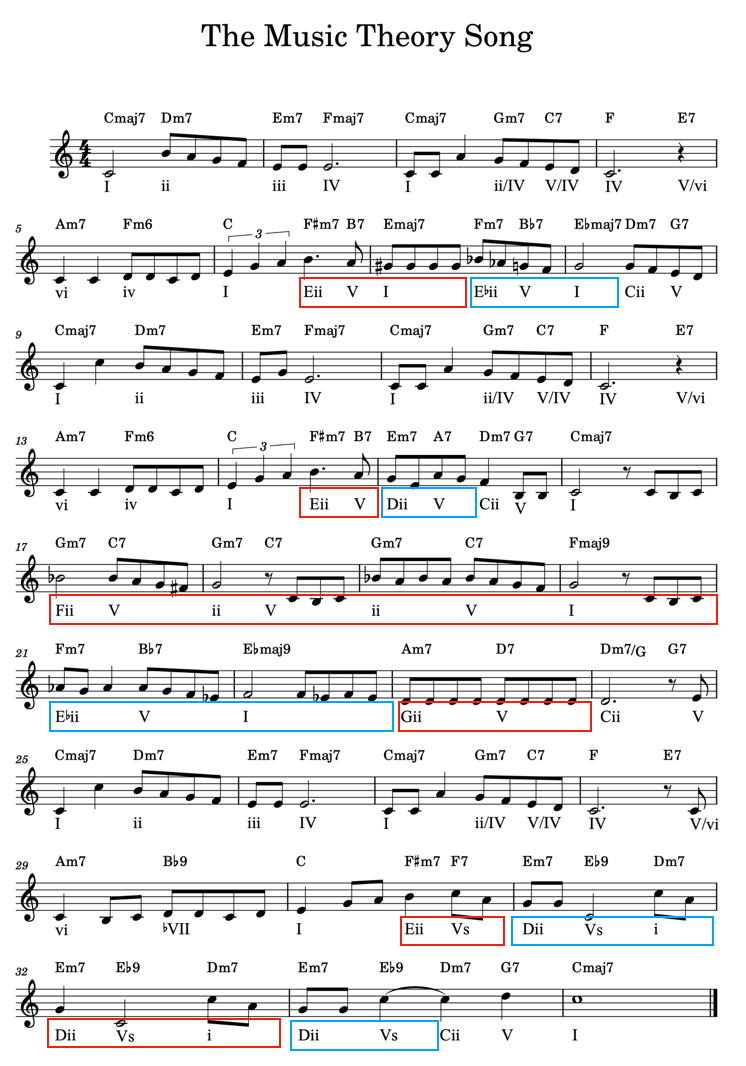Home › Forums › Music Theory › Intervals Roasting (by an open fire)
- This topic has 5 replies, 5 voices, and was last updated 10 months ago by
 Jean-Michel G.
Jean-Michel G.
-
AuthorPosts
-
-
December 22, 2024 at 9:38 am #384251
I hate to admit that sometimes, when Brian gets deep into the explanations, my eyes glaze over. But I saw this video this morning and it all came clear:
Happy holidays everyone!
-
December 22, 2024 at 10:58 am #384260
Very clever! Happy Holidays!
Joe
The sight of a touch, or the scent of a sound,
Or the strength of an Oak with roots deep in the ground.
--Graeme Edge -
December 23, 2024 at 4:10 am #384284
-
December 23, 2024 at 6:21 am #384289
Who said Christmas songs can be complicated?
John -
December 23, 2024 at 1:15 pm #384302
As Homer Simpson likes to say “Do I have to think now?”
Sunjamr Steve
-
December 26, 2024 at 5:14 am #384359
Here is the harmonic analysis, as promised!
Although this is clearly jazz and therefore slightly more complex than your average twelve bar blues, it’s not as complicated as it looks! Concentrate on the V I, ii V I and ii V chord movements: they will unravel the harmonic construction for you. It didn’t take me more than five minutes to produce the analysis below.
OK, here we go…The form of the song is 32 bars AA’BA, 8 bars per section. To find out, look at the melody.
The song is nominally in C major (empty key signature). It might be in A minor, but the first and last chords are C chords, so C major is more likely. Of course, this assumes that the transcriber took the pain to indicate the key signature… many people think this isn’t useful and don’t do it 🙁
Section A
Bars 1 to 2 contain a diatonic walk-up from C to F (C Dm Em F) before returning to C. This is certainly not standard, but it confirms that we are in C major. In fact, C is the dominating harmony; everything else is embellishment.
Next comes a tonicisation of F: Gm7 C7 F = ii/IV V/IV IV.
The last chord in bar 4 (E7) is the secondary dominant of Am.I hear bars 5 and 6 in C major, but you could argue for A minor as well. The Fm6 C sequence is a a plagal cadence iv I where iv replaces IV (it is borrowed from C minor). So we have vi iv I in C major.
At the end of bar 6 there is a brutal modulation to E major: F#m7 B7 E is a ii V I in E major. And then another brutal modulation to Eb major: Fm7 Bb7 Eb is ii V I in Eb major.
At the end of bar 8 the song returns to C major through a ii V I (Dm G C).
We have reached the end of section A.Section A’
Section A’ (bar 9) starts like section A, but ends a little differently. You should be able to see the logic, which is very similar to that of section A.Section B (bridge)
Section B (bar 17) modulates to F major. We have a series of ii V followed by a ii V I in F major.
Then in bar 21 there is modulation to Eb major (Fm Bb7 Eb), followed by another modulation to G (bar 23) (Am D7 …) until the bridge returns to C major in bar 24. Bar 23 can also be heard as a simple ii V substitution for G; that’s OK because G is in fact diatonic to Eb major, the current key.Section A and outro
Bar 25 returns to the A section. However, in bar 29, we don’t have the plagal cadence Fm6 C like previously, but Bb9 C; this is the famous backdoor cadence bVII7 I that I discussed some weeks ago.
Next comes a series of ii V in disguise that bring us back to C major through a series of modulations:
– F#m7 F7 is a ii V in E major, where F7 is a tritone substitution for B7
– Em7 Eb9 Dm is a ii V I in D major where Eb9 is a tritone subs for A7 and with a deceptive resolution to Dm instead of D
Finally, there is a ii V I perfect authentic cadence in C major to conclude the song.Right. And we do we do with that information?
From an improvisation perspective, the most important information is the identification of the various keys that the song modulates into. Knowing this, you can select the scales that you want to use to improvise with.
For example, in bars 21 to 23, it is important to realize that we are in Eb major and not in F major anymore. Since the tempo is slow, using F major over these three bars will definitely not sound good…Over the numerous ii V’s and ii V I’s you can deliberately choose to simply play the scale/arpeggio of the target chord, since this is functionally consistent with the harmony. For example, instead of playing F#m7 F7 you can simply play an E arpeggio (or major pentatonic). Sure, some notes will sound “rough”, but that’s OK if they resolve eventually. It’s jazz after all!
If you have any questions…
-
-
AuthorPosts
- You must be logged in to reply to this topic.

